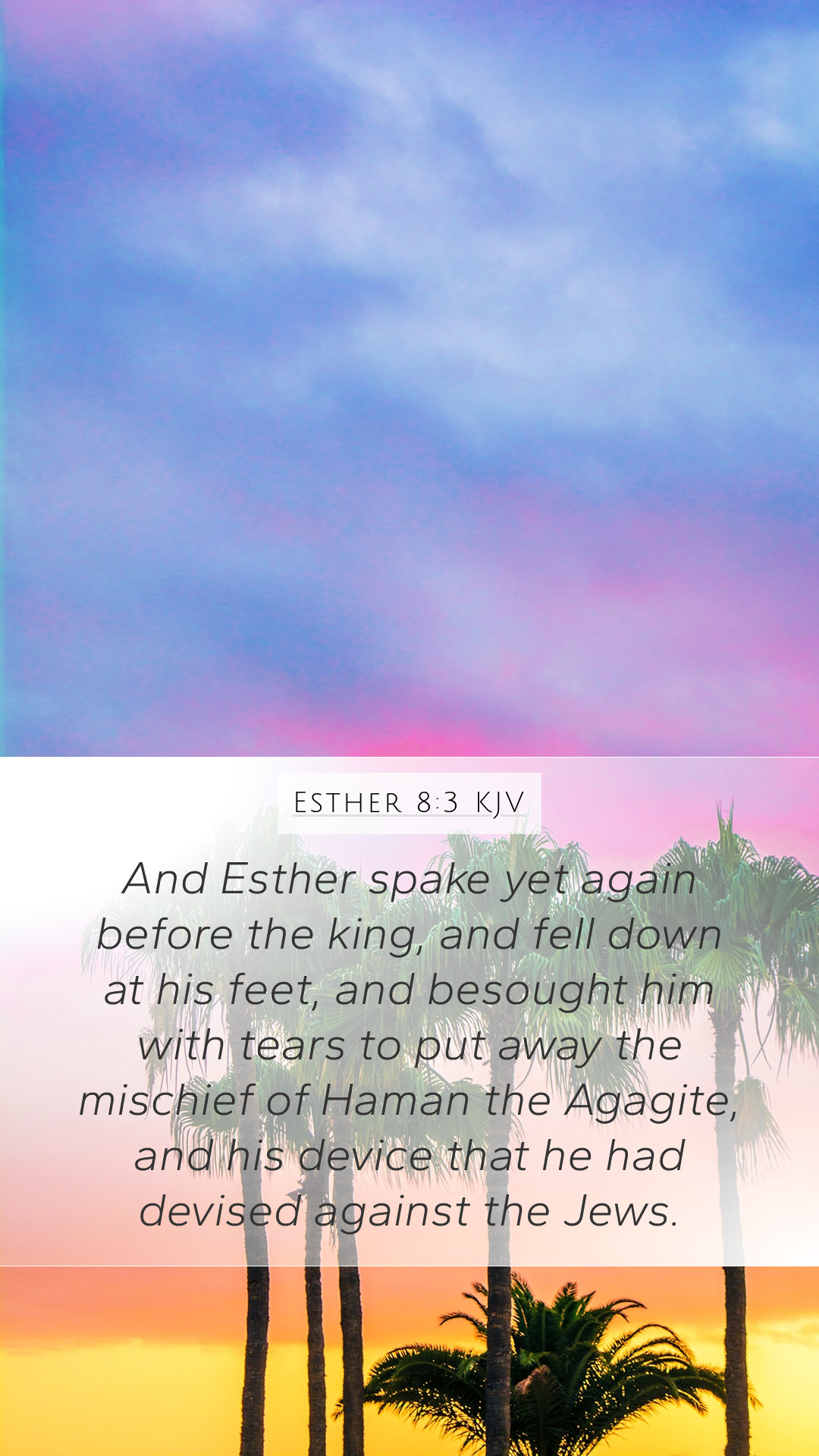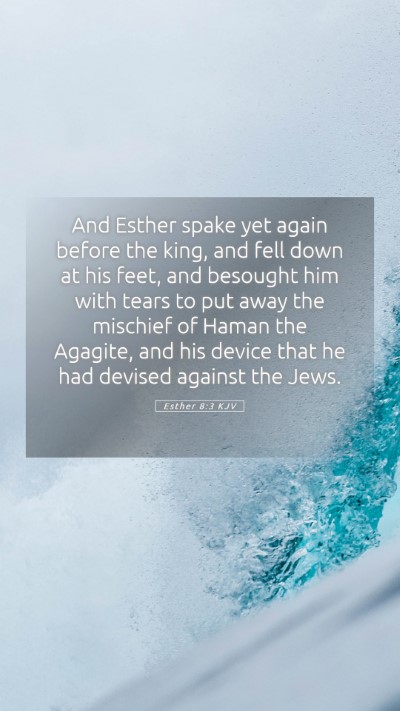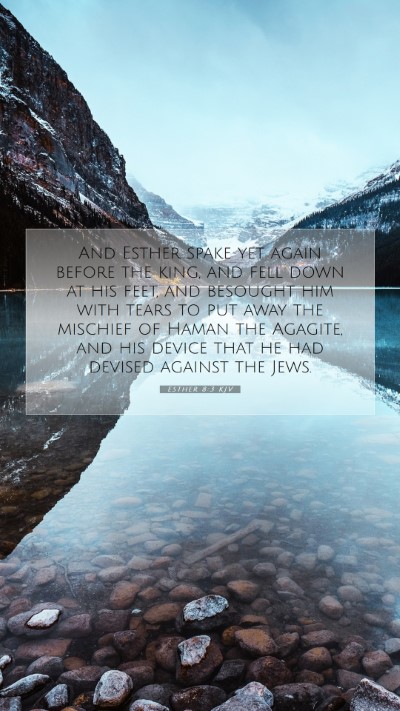Old Testament
Genesis Exodus Leviticus Numbers Deuteronomy Joshua Judges Ruth 1 Samuel 2 Samuel 1 Kings 2 Kings 1 Chronicles 2 Chronicles Ezra Nehemiah Esther Job Psalms Proverbs Ecclesiastes Song of Solomon Isaiah Jeremiah Lamentations Ezekiel Daniel Hosea Joel Amos Obadiah Jonah Micah Nahum Habakkuk Zephaniah Haggai Zechariah MalachiEsther 8:3 Meaning
What is the meaning of Esther 8:3?
And Esther spake yet again before the king, and fell down at his feet, and besought him with tears to put away the mischief of Haman the Agagite, and his device that he had devised against the Jews.
Esther 8:3 Bible Verse Meaning
Understanding Esther 8:3 - In-Depth Bible Verse Analysis
Esther 8:3 states: "And Esther spoke yet again before the king, and fell down at his feet, and besought him with tears to put away the mischief of Haman the Agagite, and his device that he had devised against the Jews."
This verse captures a crucial moment in the narrative of the Book of Esther, highlighting Esther's desperate intercession on behalf of her people. To fully understand this verse, we can draw insights from various public domain commentaries.
Bible Verse Explanation and Commentary
Esther's Compassion and Resolve
According to Matthew Henry's Commentary, Esther's act of falling down before the king represents her humility and deep concern for her people. She does not approach the king with arrogance but with a genuine plea, highlighting the compassion she holds as the Queen and a Jewess.
Albert Barnes expands on this by emphasizing the urgency of her intercession. Esther's tears underline the emotional weight of the situation; the fate of the Jews is at stake, and her approach to the king reflects the gravity of their predicament.
Adam Clarke's Commentary further delves into the historical context, noting that Haman's plan posed a significant threat not only to the Jews but also to the integrity of the Persian Empire. Esther's plea aims to counteract this grave danger.
The Role of Prayer and Intercession
This verse is pivotal in illustrating the importance of prayer and intercession in the face of adversity. Esther's tears can symbolize a heartfelt appeal not just to the king, but to God, reflecting a deep understanding of the power of supplication.
Matthew Henry suggests that Esther's actions serve as a model for believers in seeking divine favor and intervention through earnest prayer. Her dependence on the king foreshadows the ultimate reliance believers should have on God.
Significance of Haman's Device
The "mischief of Haman" refers to his malevolent plot against the Jews. This term underscores the wickedness of Haman's intentions, as well as the seriousness of the challenge facing Esther and her people.
Clarke remarks that Haman symbolizes the broader forces of evil that can sometimes seem overwhelming, yet Esther's courage to confront the king is an inspiring example of standing against tyranny.
Connecting Esther 8:3 to Broader Biblical Themes
This verse not only highlights personal courage and intercession but also connects to wider themes present in Scripture, such as the fight against oppression, the power of heartfelt prayer, and the significance of righteous leadership.
Moreover, it serves as a reminder of God's providence. Despite the dire circumstances, Esther's actions are guided by faith, exemplifying how God can turn perilous situations into opportunities for rescue and redemption.
Cross References
- Esther 4:16 - Esther seeks to intercede for the Jews.
- Esther 7:3-4 - Esther reveals Haman's plot to the king.
- Psalm 34:18 - God is near to those with broken hearts.
- Philippians 4:6-7 - Encouragement to cast our cares unto God.
- James 5:16 - The effectual fervent prayer of the righteous avails much.
Conclusion
In Esther 8:3, we witness Esther's brave and earnest plea that embodies the themes of intercession, faith, and courage. The insights from various commentaries aid us in grasping the significance of this passage while providing profound Bible verse meanings and Bible verse interpretations. Esther's story remains a powerful example for Bible study groups and anyone exploring understanding Scripture.


